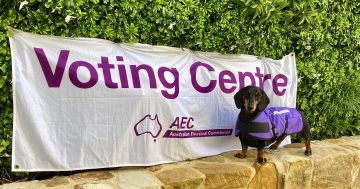
Preparations for the Voice referendum are well underway. Photo: AEC.
Informing Australians about both sides of the Indigenous Voice to Parliament referendum is a tricky job for the responsible federal agency, which is also determined to protect its own non-partisan democratic role.
As debate over the referendum bill continues in the House of Representatives, senators have been extracting information about the mechanics of the process, which is likely to send Australians to the polls around October.
Australian Electoral Commissioner Tom Rogers has told a Senate Estimates hearing this week that the AEC’s aim was for every household across the country to be delivered a pamphlet outlining the cases for and against.
The huge task has strict rules about who can prepare the pamphlets and how their wording must be structured.
Parliamentarians from the yes and no camps will prepare wording for the pamphlets, but if they do not conform to the requirements over content – keeping it simple and not being politically charged etc – the AEC, by law, will not be able to print them.
Both camps will have 28 days from the moment triggering legislation successfully passes through parliament to deliver their properly worded pamphlets to the AEC.
Mr Rogers said it was a strict deadline that had to be met.
“If one of those cases doesn’t arrive in time, we’ll be publishing a yes/no pamphlet with one of those cases and not the other,” the commissioner said.
“Additionally, if one of those cases arrives outside the legislative framework that’s been mandated, including any words over 2000 words, we’ll need to reject that case in its entirety.
“And again, it might mean that we’re distributing a booklet with only one case.”
But the pamphlets, if conforming to the rules, will be delivered as they are written, including any typos.
That way, the AEC cannot be accused of tampering with either case.
“Even a spelling check or grammatical error, whatever is provided by parliament, will be exactly what is sent out,” Mr Rogers said.
“We will be printing [whatever is] provided by those committees and not making any editorial decisions, including layout.
“I’m very conscious of the need for me not to intervene in that process so there’s not even a perception that somehow the AEC is involved in promoting one case and not the other.”
The commissioner described the pamphlet preparation and delivery process as “large scale” and “complex” but insisted the AEC was up to the task.
The AEC also advised this week that in-person voting services for Australians overseas will return to pre-pandemic levels for the referendum.
“The reduction to in-person polling places during the pandemic was unavoidable for a range of operational and COVID-19 restriction-related reasons in many overseas locations,” Mr Rogers said.
“I’m pleased to say the environment as it stands will mean the number of overseas voting centres open in cities across the world for the referendum will return to pre-COVID-19 levels.
“Voting in-person overseas is a great touchstone for Australians living and travelling overseas, and I’m pleased to see it return to most of Australia’s diplomatic missions abroad through the strong ongoing cooperation between the AEC, DFAT and Austrade.
“We don’t have details of finalised arrangements and locations to provide at this stage, but given the significant discussion occurring regarding the referendum, it is prudent to advise people of this aspect of our intended referendum service provision.
“Overseas voting at embassies, high commissions and consulates in cities around the world is one of many areas where access to democracy places Australia as a global leader.
“We will, of course, continue to monitor the environment in consultation with DFAT and Austrade with the safety of voters and diplomatic mission staff a key consideration in any final service offering.”
The AEC will also provide fast-tracked arrangements for overseas postal voting.


















